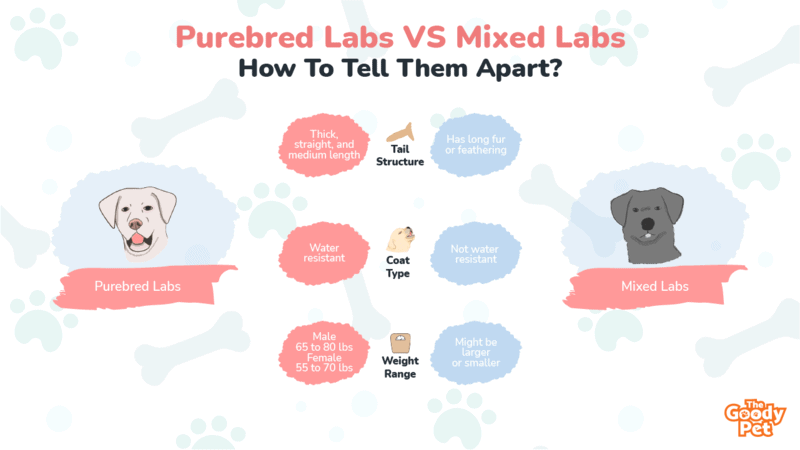Labrador Retrievers currently sit on the top of the list of the most popular dog breeds according to the American Kennel Club. With such high demand for this awesome dog breed, mixed breeds getting passed off as the real deal by shady breeders are somewhat inevitable.
The best way to tell a purebred Lab apart from a mixed Lab is through analyzing their appearance and their behavior. Genetic testing should also help out with a more accurate analysis.
However, the appearance and behavior analysis are the more easily accessible and more affordable options. Here is more about these features and how they can help you identify a purebred Labrador.
12. Natural Instinct: Retrieval
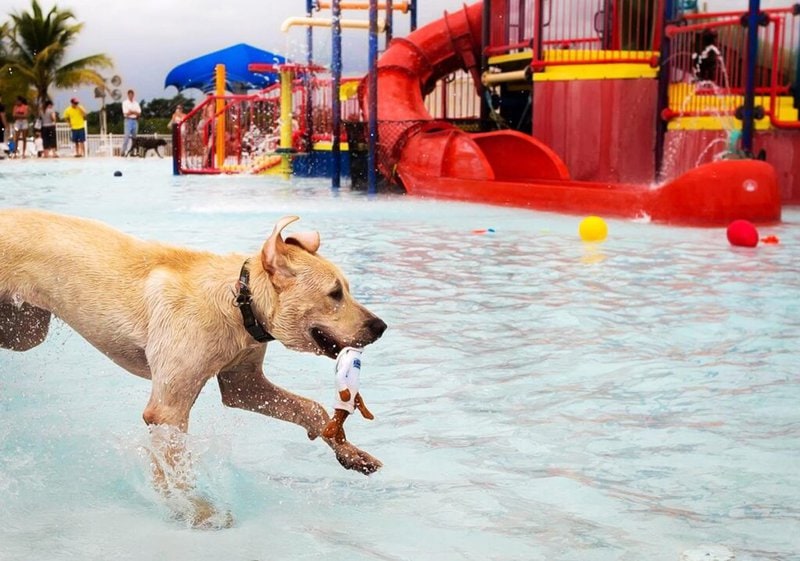
Another natural instinct that should help you pick out a purebred Labrador Retriever is their inclination towards activities that include retrieval. They will enjoy games like catch and fetch that allow them to chase and retriever objects.
They also have a very gentle bite which you will notice in the durability of their chew toys as well as balls you use for games like fetch.
However, this clue may not be very useful if the Labrador is mixed with another retriever like the Golden Retriever.
11. Natural Instinct: Not Afraid Of Water

Purebred Labrador Retrievers are naturally very comfortable in the water. This is due to their history of use as retrievers which includes retrieving prey from large water bodies like rivers and lakes.
These purebred Labs will instinctively gravitate towards activities that allow them to relieve the glorious past of their ancestors. This could be the dog sneaking a swim in your pool or having just a bit too much fun splashing about in a puddle of water.
10. Appearance: Coat Type
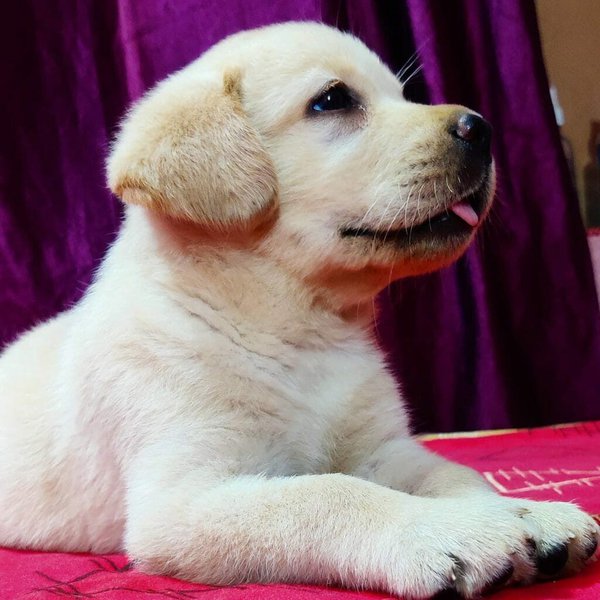
Labrador Retrievers were bred for use as hunting dogs. Their tasks included retrieving waterfowl in which case their water-resistant coats came in very handy.
When mixed with other dog breeds, there is the possibility that the resulting mixed breed Labrador will not have this characteristic water-resistant coat.
This makes it very difficult for the mixed lab to enjoy time swimming or playing in larger pools of water as the fur gets wet and heavy.
9. Appearance: Markings

For the most part, purebred Labradors have uniform coats with no markings. However, a single white patch of fur on the center of the dog’s chest is considered a standard marking for pure Labrador Retrievers.
If the white markings extend past this point or the Labrador has other markings like black or tan patches, there is a good chance that the Lab is a mixed breed. The tan markings are a common appearance when Labs are mixed with breeds like German Shepherds or Rottweilers.
8. Appearance: Height At Withers

Another telltale sign of Labradors is their height ranges. The breed does not vary very much so any Lab that is too small or too large is most likely a mixed breed.
For some perspective, let’s take a look at these height ranges measured from the withers to the ground for standard Labrador Retrievers. These are different between males and females.
Purebred males measure between 22 to 22.5 inches. Female Labradors are typically smaller with a height range of 21.5 to 22 inches.
7. Appearance: Weight Range

The build and weight ranges of the Labrador could also point to whether it is purebred or mixed.
Purebred Labradors have a proportional build with a wide chest that narrows towards the back. In terms of weight, the ranges differ between male and female Labs.
Male Labradors weight from 65 to 80 lbs while the smaller females can weigh between 55 and 70 lbs.
If the Labrador is smaller than this, they may be a miniature version bred from runts. However, they are more often than not a result of mixing with a smaller dog breed. If the Lab is much larger than this range, it is almost definitely a mix.
6. Appearance: Tail Structure
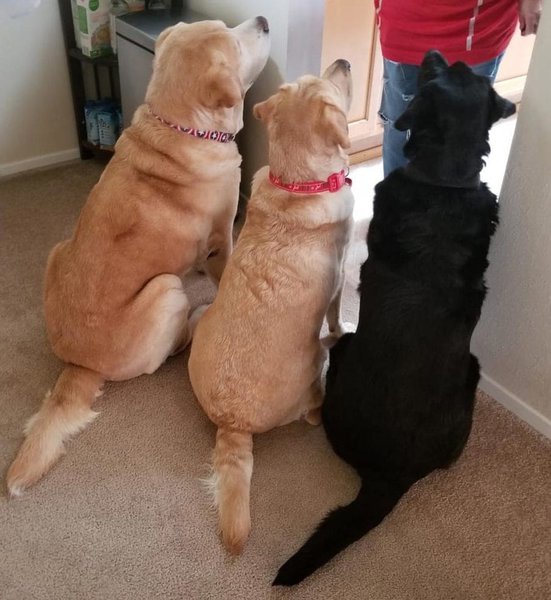
The tail is often forgotten as a marker for breeding but it is actually one of the best ways to tell purebred Labs apart from mixed doggies.
The tail on a pure Labrador Retriever is thick, straight, and of medium length. It is unique in that it tapers with the thickest point at the base and the narrowest at the tip.
The tail is covered by a thick coat that should be of the same length as the rest of the coat. Any long fur or feathering is a sign of possible mixed breeding.
5. Appearance: Nose Color

The nose color that a purebred Labrador has depends on their coat color. Typically, black Labradors will have a black nose and chocolate Labradors have dark brown noses.
The Yellow Labrador variety is the exception with some having black noses while others have light brown noses.
The Labrador may also have a pink nose. These Labradors lack the pigmentation necessary for different nose colors. They are known as Dudley Labrador Retrievers.
4. Appearance: Eye Rim Color
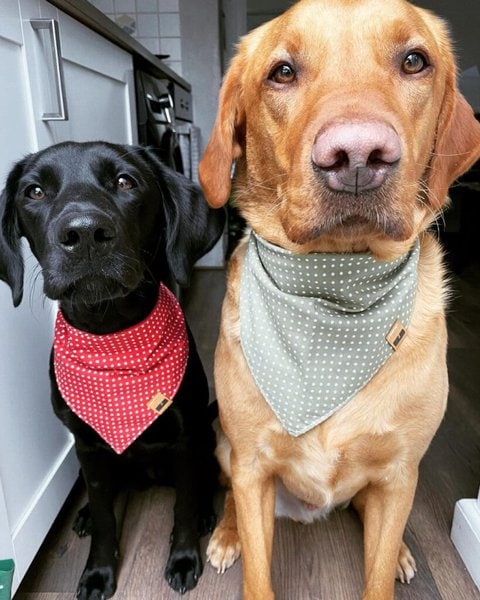
The color of the eye rims also depends on the coat color and the genes present in the purebred Labrador. The rim will be black in yellow Labs and in black Labs.
With purebred chocolate Labrador Retrievers, the color of the eye rim will be a shade of chocolate brown similar to the coat and nose.
If the Labrador has eye rims without any pigmentation or any other color other than black or chocolate, you may have reason to suspect that it is a mixed Lab.
3. Appearance: Ears

The ears on purebred Labrador Retrievers are another distinct feature you can use to tell purebred and mixed Labs apart.
Those on purebred Labs are large but in a proportional way compared to the skull. They are set far apart just slightly above the eyeline.
The ears are floppy and fall to a point above the corner of the dog’s jaw.
Labradors with excessively large or erect ears are most likely mixed with a dog breed that has those ear characteristics.
2. Appearance: Coat Length
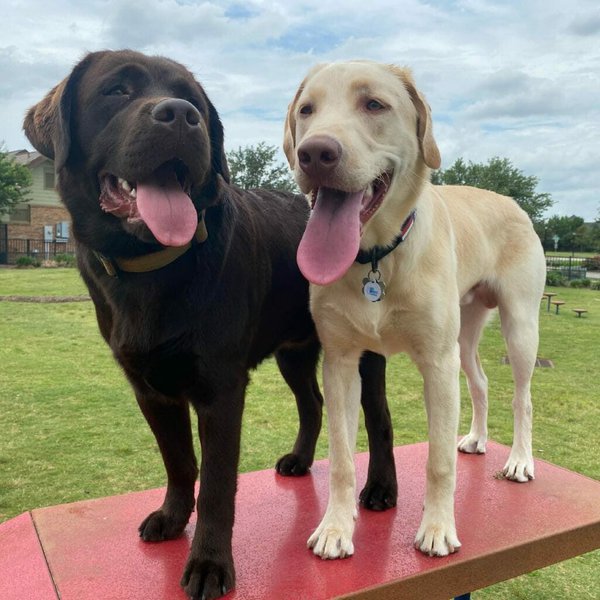
Labrador Retrievers of purebred origin should have a short coat. This coat has 2 layers and is very dense. The fur around the neck may be slightly longer than that on other parts of the coat.
The fur itself is typically straight. However, some slight waviness is acceptable according to AKC breed standards. It should also be slightly coarse to the touch.
If the Labrador has either long, smooth hair or both, it is likely a mix with other similar breeds like the Golden Retriever.
1. Appearance: Colors

Purebred Labrador Retrievers come in 3 standard colors. These are the black, chocolate, and yellow Labradors. The intensity and shade of the yellow and the black Labradors may vary with some being darker or lighter than others.
A Labrador-like dog with any other color than the standard colors recognized by the American Kennel Club’s breed standards is likely a mixed bred Lab. Some of the common colors you may get in mixed Labradors include copper brown and white.
Related Questions
How Do I Know If My Labrador Is English Or American? The best way to know if your Labrador is English or American is by comparing features like head shape and body build to the standards for each of the two variations. Generally speaking, American Labradors are smaller than English or British Labs. English Labs have a stockier build with a wide chest, a wide skull, and a shorter skull. American Labs tend to be leaner and have a narrower chest and skull as well as a long snout.
Why Are Labs So Needy? Labradors are social dogs that have a long history of living and working in very close proximity to humans. They are therefore happiest when they are around their human companions. Lack of this contact and proximity will trigger needy tantrums and could even cause separation anxiety for the Labrador Retriever.
What Is The Smallest Breed Of Labrador? The smallest breed variation of the Labrador is the Miniature Labrador Retriever. They are bred by pairing runts in Labrador litters for their smaller size. This is why mini-Labs are often very sickly. The sizes vary greatly depending on the parents but they are always below the weight and height ranges of regular Labradors.

